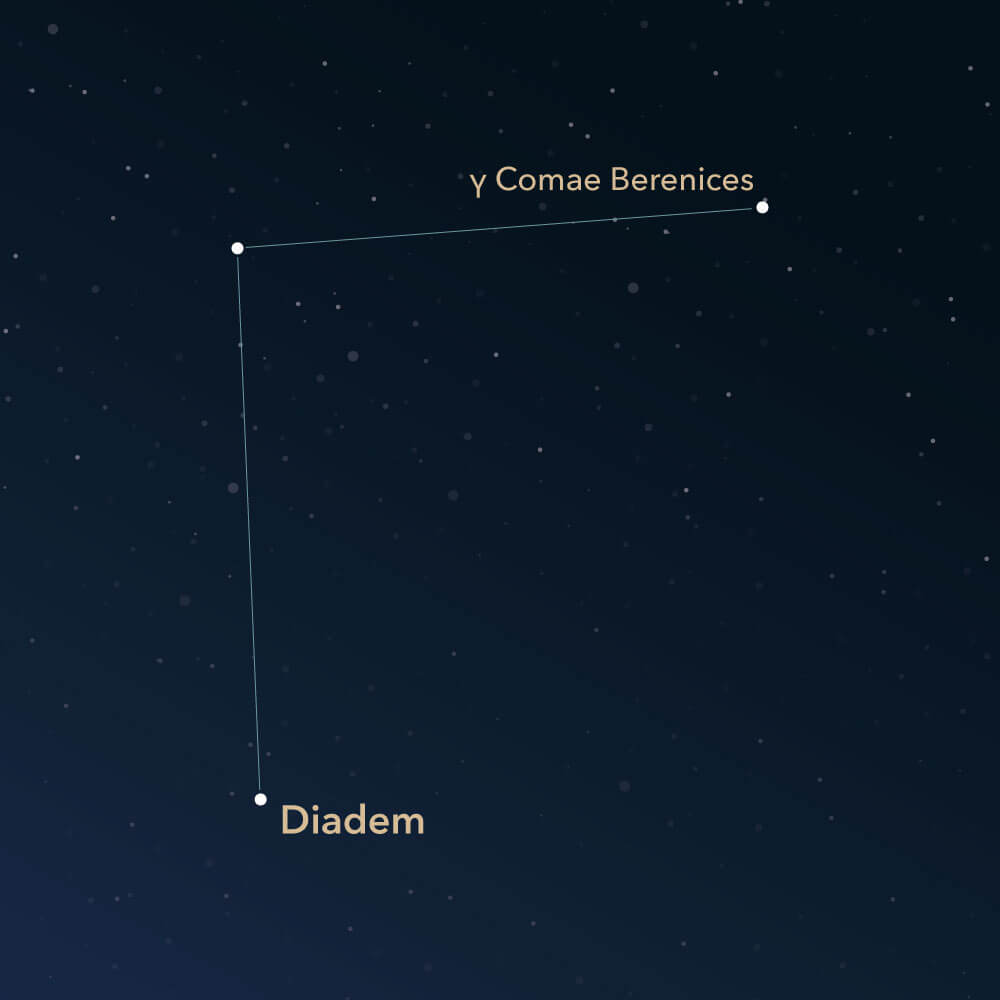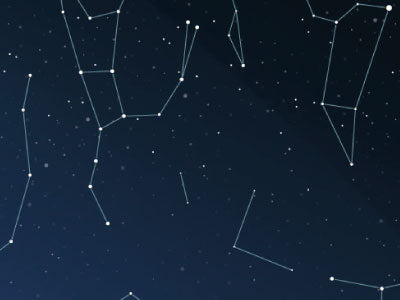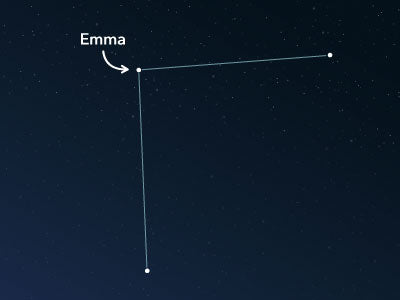The constellation Coma Berenices
Characteristics
- Other names / Symbolism
- Berenice's Hair
- Hemisphere
- Northern hemisphere
- Visibility
- March - May
- Area
- 386 deg²
- Brightest star
- Diadem (HIP number 64241)
- Specialties
- Open star clusters, globular clusters, galaxies

The Coma Berenices, meaning Berenice's hair, is the only constellation whose name's origin is based on a historical figure. In its area are many exciting deep-sky objects to observe.
Hemisphere, visibility, and area
The constellation is located in the northern hemisphere and can be observed from almost all inhabited regions of the earth. It is visible up to 57° south latitude, making it only invisible from the Antarctic and ocean areas surrounding the Antarctic.
The best months to see the constellation in the night sky are from March to May. But it is still visible in many places after that time.
With an area of approximately 386 square degrees, the constellation ranks 42nd out of all 88 constellations.
Finding Coma Berenices is not easy. Both the shape and the stars are very inconspicuous. The brightest stars only reach the fourth magnitude. The shape resembles a 90° corner consisting of three stars. Diadem (Latin: α Comae Berenices, Alpha Comae Berenices) is the brightest of the three stars. It is a closely spaced double-star system whose stars revolve around each other about every 25 years. Its apparent magnitude is roughly 4.3.
To still discover the constellation in the sky, it is helpful to look for adjacent constellations. The neighborhood has a couple of prominent constellations, such as Ursa Major, Leo, or Boötes. But the Canes Venatici and Virgo also border the constellation.
Specialties in the constellation
In the region of Coma Berenices, there are several interesting deep-sky objects, such as open star clusters, several globular clusters, and galaxies.
The most well-known object is the open star cluster Melotte 111, also known as the Coma Star Cluster. It lies south of the star γ Comae Berenices (Gamma Comae Berenices) and can already be seen with binoculars. The star cluster is about 250 light-years away from earth and contains just under 40 stars. Its age is estimated to be around 500 million years.
In addition to this star cluster, there are several globular clusters to discover. The brightest is M53 (Messier 53), named after the French astronomer Charles Messier. It is located at a distance of approximately 60,000 light-years and appears as a nebulous patch in binoculars.
Various galaxies can also be observed in Coma Berenices.
The brightest of the galaxies is the spiral galaxy M64 (Messier 64). It has an apparent magnitude of roughly 8 and is about 22 million light-years away. With a larger telescope, dark clouds can be seen in the center of the galaxy. Optically, the galaxy resembles an eye, which is why it is known as the "Black Eye Galaxy." According to recent research, the outer matter rotates opposite to the inner region. That could indicate that the M64 has collided with at least one other galaxy.

Many more objects can be observed, especially in the southern region at the border to the constellation Virgo.
Mythology and history
In ancient times, Coma Berenices was still part of the constellation Leo, as a light shimmer from the Coma Star Cluster.
Around 250 BC, the Egyptian pharaoh Ptolemy III married the young Berenice of Cyrene, who was known for her blonde locks and considered a great beauty.
However, after the wedding celebration, the pharaoh had to go to war. Berenice vowed to sacrifice her long hair if her beloved husband returned unharmed. When his victorious return was announced, she cut off her hair and placed it on the altar of Aphrodite.
The next day, when the hair could not be found, unrest arose in the pharaoh's court. However, the court astronomer was able to lift the mood again by claiming that the gods had joyfully placed Berenice's hair as part of Leo in the sky.
In the 16th century, due to a misunderstanding, Coma Berenices was eventually listed as its own constellation.
PublishedRead more interesting articles

An overview of all 88 constellations
Learn more about all 88 constellations and read interesting information about the mythology, visibility, and features.

Planetarium App
Discover the night sky with our planetarium app!
Available for iOS and Android.

Name a star in the constellation Coma Berenices
Name a star in a constellation and create something that lasts for eternity.